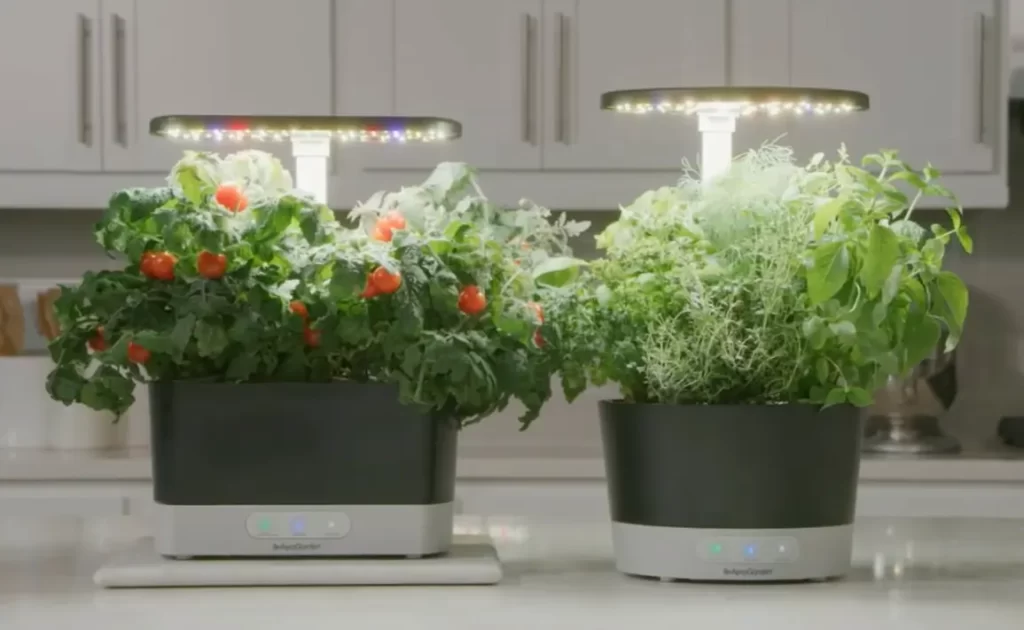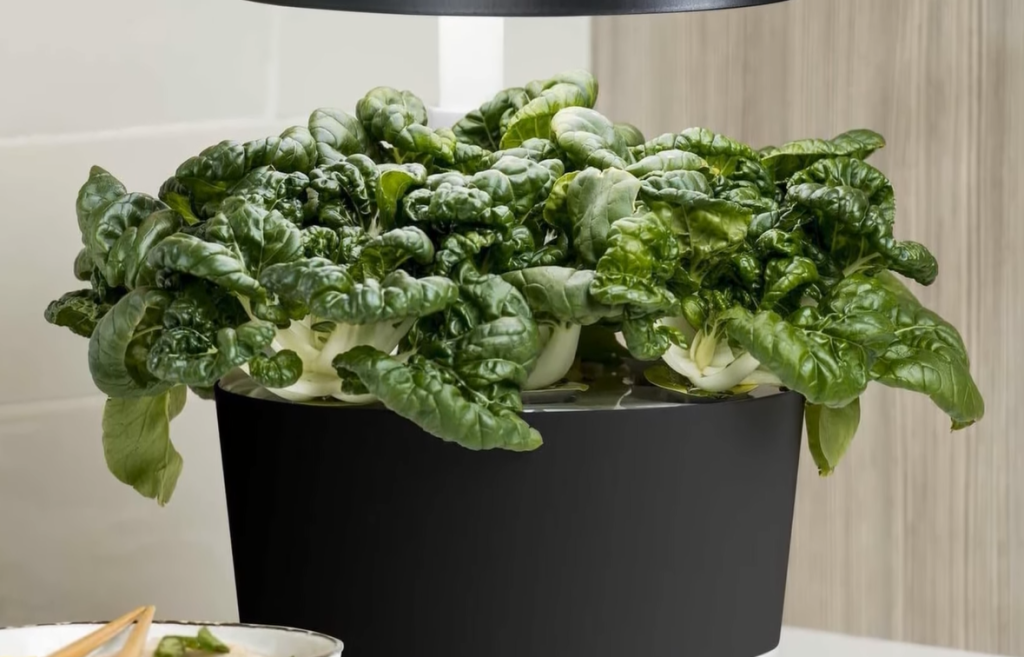Are Indoor Hydroponic Gardens Worth It? Pros & Cons
Indoor hydroponic gardening has become increasingly popular as people look for ways to grow fresh produce in small spaces. Hydroponics, which typically involves growing plants in water-based solutions instead of soil, offers many advantages over traditional gardening.
However, many people are still skeptical about: Are indoor hydroponic gardens worth it? Yes, indoor hydroponic gardens are worth it. They provide numerous benefits, including growing plants, reducing water usage, and growing to produce faster than traditional gardening methods.
In this blog post, we’ll explore the advantages of indoor hydroponic gardening, the different types of hydroponic systems available, and whether hydroponic gardening is a practical and cost-effective way to grow fresh produce at home.
Brief Overview of Indoor Hydroponic Gardening
Indoor hydroponic gardening is a method of growing plants without soil, using water and nutrient solutions instead. This type of gardening utilizes artificial lights to mimic the sun’s rays and provides an ideal environment for plants to grow quickly and healthily.

Vegetables, herbs, and lettuce are common plants in indoor hydroponic gardens. The method involves planting seeds in a growing medium, such as rockwool or coco coir, and placing them in a hydroponic system that circulates nutrient-rich water to the roots.
Timers control the water pump and lighting to maintain optimal growing conditions. Indoor hydroponic gardening offers fresh herbs and produce and is perfect for those with limited outdoor spaces. However, it can be costly to set up and requires regular maintenance.
Advantages of Indoor Hydroponic Gardening
Indoor hydroponic gardening is growing plants using nutrient-rich water solutions, without soil, in controlled environments such as homes or offices. This innovative approach has numerous advantages, including:
Higher Yield and Faster Growth of Plants
Indoor hydroponic gardening allows for larger plant growth and a higher yield of vegetables, herbs, and other produce. Hydroponic systems provide plants with abundant nutrients, allowing them to grow faster and healthier than traditional gardening methods. Plants grown in hydroponic gardens typically mature more quickly than those grown in soil-based gardens, leading to a more abundant harvest.
Conservation of Water
Hydroponic systems requires less water than traditional soil-based gardening methods, as water in hydroponic gardens is recirculated through a water pump. This means less water is wasted, and plants receive the right amount of water they need to grow, leading to healthier plants.
Energy-Efficient Lighting
Hydroponic systems require artificial lights, such as LED lights, to simulate sunlight. These lights are height-adjustable and use less energy than traditional lighting methods. Additionally, these lights can be programmed using timers to provide the optimal light for each plant.
Space-Saving and Cost-Effective
Indoor hydroponic gardening takes up less space than traditional soil-based gardening, making it ideal for homes with limited outdoor space. Hydroponic gardens are also cost-effective, requiring less maintenance, no soil, and no pesticides.
Fresh Herbs and Vegetables
Indoor hydroponic gardening allows fresh herbs and vegetables to be produced year-round, regardless of weather conditions. This allows access to fresh produce at all times, leading to a healthier diet.
Easy Maintenance
Hydroponic systems require less maintenance than traditional soil-based gardening. They require minimal weeding, and the nutrient-rich water solution means less fertilization is necessary. Weekly system maintenance typically takes only a few minutes, making it an easy and hassle-free way to grow plants.
Drawbacks of Indoor Hydroponic Gardening
Indoor hydroponic gardening is becoming increasingly popular due to its many benefits, including growing plants without soil and in a limited space. However, this gardening method also has its drawbacks that potential gardeners should be aware of.
Plant Growth and Produce
While hydroponic gardening can result in healthy and larger plants, it can also lead to poor plant growth and low yields if not done correctly. Lack of proper nutrients, pH balance, and temperature control can negatively affect plant growth and production.
Costs
Setting up an indoor hydroponic garden can be costly, especially when purchasing hydroponic systems, lights, and timers. Additionally, the cost of maintaining a hydroponic garden can be higher than traditional gardening due to the need for specialized nutrients and water pumps.
Maintenance and Time
Indoor hydroponic gardens require regular maintenance to ensure proper nutrient and water levels and prevent the growth of algae and bacteria. The time commitment for maintenance can also be significant, with some hydroponic gardeners reporting spending up to an hour a day on maintenance.
Water and Pump
Hydroponic gardens rely on a water pump to circulate the nutrient-rich water solution to the plants. If the pump fails or stops working, the plants can quickly die due to a lack of water and nutrients. Maintaining the water levels and ensuring the pump is working correctly is essential to the success of an indoor hydroponic garden.
Hydroponic Systems: Types and Methods
Hydroponic systems are becoming increasingly popular because of their efficiency, space-saving benefits, and the ability to grow fresh produce all year round. Here are some of the types of hydroponic systems available.
1. Deep Water Culture (DWC) Hydroponic System
The DWC hydroponic system is a popular type that involves suspending the plant’s roots in nutrient-rich water. A water pump circulates the water, ensuring that the roots receive enough oxygen. This system is ideal for growing small to medium-sized plants like herbs and lettuce.
2. Nutrient Film Technique (NFT) Hydroponic System
The NFT hydroponic system uses a shallow stream of water to deliver nutrients to the plant’s roots. The roots are suspended above the stream of water, allowing them to absorb the nutrients they need. This system is commonly used to grow vegetables like tomatoes, cucumbers, and peppers.
3. Aeroponic Hydroponic System
The aeroponic hydroponic system uses mist to deliver nutrients to the plant’s roots. The roots are suspended in the air, and misters spray them with nutrient-rich water. This system is ideal for growing plants like strawberries and lettuce.
4. Drip Irrigation Hydroponic System
The drip irrigation hydroponic system delivers nutrient-rich water to the plant’s roots through a drip emitter. The emitter slowly drips water onto the plant’s roots, ensuring they receive the necessary nutrients. This system commonly grows larger plants like peppers, tomatoes, and cucumbers.
5. Ebb and Flow Hydroponic System
The ebb and flow hydroponic system involves flooding the plant’s roots with nutrient-rich water and draining it away. This system uses a timer to control the flooding and draining cycles. The ebb and flow hydroponic system commonly used to grow plants like tomatoes and peppers.
If you don’t know how to grow hydroponic microgreens, you should first know better about that. This will help you to make your hydroponic plant successful.
Are Indoor Hydroponic Gardens Worth It?
Indoor hydroponic gardens can be a great investment for those who want to grow fresh herbs and vegetables year-round. Hydroponic systems use a water solution to grow plants without soil, which can save space and reduce maintenance costs.

With the help of timers and artificial lights, plants can grow faster and produce higher yields than with traditional gardening methods. Indoor gardens like AeroGarden and Rise Gardens offer pre-made systems that are easy to set up and use.
Lettuce, herbs, and vegetables like tomatoes and peppers are some of the most popular crops for hydroponic gardens. However, the initial costs can be expensive, requiring some time and effort to maintain the system. Overall, indoor hydroponic gardens can be worth it for those who value fresh produce and indoor gardening.
Final Words
After reading the discussion above, you may get the answer to the question: Are indoor hydroponic gardens worth it? In general, indoor hydroponic gardens are worth investing in.
They offer numerous advantages, such as a reduced cost of water and space, fewer pests and diseases, and faster growth rates. Additionally, they are a great way to save time, energy, and resources while growing fruits, vegetables, and herbs.
This makes hydroponic gardening an attractive and sustainable choice for any gardener. With its many advantages, it is easy to see why indoor hydroponic gardens are worth it.
